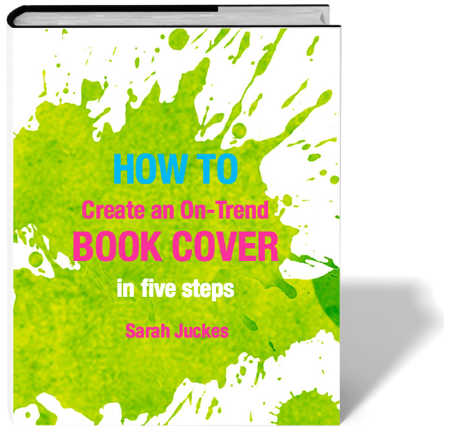Three business models for self-publishing your books in print
 There are more options than ever for authors to self-publish print books. But which is right for you? They really boil down to three business models, says Sarah Juckes.
There are more options than ever for authors to self-publish print books. But which is right for you? They really boil down to three business models, says Sarah Juckes.
[rt_reading_time label="Reading Time:" postfix="minutes" postfix_singular="minute"]
When self-publishing a print book, you may wish to go it entirely alone and set up your own production, marketing and distribution networks, or you may wish to use one of the many companies offering some of these services. Well-known book creation and publishing platforms such as CreateSpace, Matador and CompletelyNovel offer the creation and distribution services you might lack, but in a variety of ways. Each company operates a different business model. By having a clear idea of how their models differ, you can be clear about what you’ll be getting from them and whether that matches your aims and publishing mindset.
So, which model would best suit you? Here are three different business models operated by self-publishing companies and platforms, and their pros and cons for authors.
First things first: What do you want from your book?
Are you looking for the opportunity to conventionally publish? Is you main goal to have wide availability for your work? Hungry for money? Knowing what your priorities are will help you make sense of what each of the models below are offering. It’s important to be realistic in your aims and do your research about what you can expect from independent publishing. The Alliance of Independent Authors has a wealth of grounded information and statistics to help.
1. The Commission-Based Model
This business model is the most frequently used by print-on-demand publishing companies, including Amazon’s CreateSpace, Lulu and Ingram Spark. Rather than charging an outright fee, the Commission Model platform makes its money by taking a percentage of every book sold.
The numbers: Around 40% (depending on the platform) is taken from the profit of each book by the publishing company, and the rest is returned to you.
The positives:
- Start publishing with no upfront fees – thanks to print-on-demand, the cost of the book is deducted from the RRP, meaning you might not have to pay anything upfront to get your book out there
- Safety in numbers – thousands of other authors publish this way as it’s the most well-known
- Financially, it is the best option for books that sell less than six copies a month (such as back-lists, niche books or for new authors who aren’t sure).
The negatives:
- Other models may offer a higher royalty rate, so it isn’t always the best option financially
- This might not be the best option if you are looking for a personalised service or help
- The drawback of this model combined with print-on-demand is that (particularly with larger books that cost more to produce) you sometimes have to price your book higher than the standard market price to earn a reasonable royalty.
2. The Upfront-Fee Model
This model has had a few different names, but relates to the publisher who will charge an upfront fee to create, publish and sometimes even market your book for you. This model has previously been exploited with ‘vanity publishing’, but companies such as Matador have proved that this model can be trustworthy and a viable way to publish.
The numbers: Authors will be asked to pay an upfront fee before their book is published, usually upwards of £700/$1,200, averaging about £1,500/$2,500 (stats taken from services reviewed by TIPM). The services included in this will vary, but usually include editing and design from their in-house staff. Authors may also be charged a small commission per book.
The positives:
- Suits authors who don’t have much time to spend creating their book on a computer, or want to simplify self-publishing so all aspects are done by the same company
- Often a more hands-on service, covered in the upfront fee
- Financially, it works for those who want book creation services and have a ready-made readership to make back the initial outlay.
The negatives:
- It can be difficult for an indie author to make back their initial investment
- The editing and design services offered as part of a package can also sometimes seem like ‘factory line editing’, and authors might find that they get a more personalised service hiring a freelancer
- Some authors have also found themselves tied into long contracts, so check the small print when signing up
- Other models may have a higher royalty rate if a commission is also charged for books sold.
3. The Subscription Model
The consumer version of this model has been made popular by sites such as Netflix and Spotify, but it can also apply to publishing. In this model, authors ‘subscribe’ to publishing services for one fixed fee per month, rather than commission from sales. This is the model adopted by CompletelyNovel.com.
The numbers: Authors pay a fixed fee of £7.99/$11.99 per month for two titles, or £14.99/$21.99 per month for up to ten titles, and keep 100% of book royalties. The subscription cost covers the use of online creator tools to produce the book, ISBN registration and worldwide distribution through print-on-demand.
The positives:
- No upfront fees – subscription amounts taken and royalties deposited monthly
- Financially the best option for authors selling more than six books a month (such as new titles with marketing efforts behind them)
- No contract or lock-ins (good for authors looking for publishing contracts with traditional publishers, as they can leave at any time).
The negatives:
- Not financially viable for those consistently selling less than six books
- This might not be the best option if you are looking for lots of hands-on assistance.
Consider the company
As well as the model, you should also spend some time researching the individual company you are getting involved with. Independent companies like Matador and CompletelyNovel can afford to offer a more personalised service and individual rewards, whereas larger companies such as CreateSpace and Lulu will have more tools and DIY information available from author sources, but it may be harder to reach a real person. The Independent Publishing Magazine offers a useful list of things you should be thinking about when choosing the company for you.
Another thing to note here is that you don’t have to be tied into one method forever. Some authors might find that it makes sense to make use of all of these methods for different books – their books for which they already have an audience could be published with the Upfront-fee model, their popular new titles on the subscription model, and their older titles on the Commission Model. This shows what a wealth of options are available for all sorts of authors with all sorts of different goals. It’s just a matter of choosing which one is right for you.

 There are more options than ever for authors to self-publish print books. But which is right for you? They really boil down to three business models, says
There are more options than ever for authors to self-publish print books. But which is right for you? They really boil down to three business models, says 

Really clear, helpful post. I’d just add that in the up-front fee model there are increasingly providers like me who provide a more individualised service to authors – in my case, making books that work as effective marketing tools for business owners – rather than simply processing manuscripts. For authors seeking profile or brand visibility this is a real potential win over traditional publishing, which is based on restricting access to content rather than getting it out as widely as possible.
Very good point re contracts – if you’re taking the financial risk you should hold all the rights in your content, IMHO!
This is a great post. My sister has been kicking around the idea of writing a book and was telling me about how she’s been researching self publishing. I will send on this post because I think this information will benefit her, for sure! There’s also a book she told me about called “Self-Publisher’s Legal Handbook” by Helen Sedwick, http://www.helensedwick.com. Might be helpful to others looking to learn more about self publishing. Thanks!
You neglected what is potentially the most-profitable self-pub method — forming your own tiny publishing company.
I started Silver Sands Books in 2008 and have published more than 40 books.
It’s not hard to become a publisher: http://www.amazon.com/dp/B00AVDWAA4/